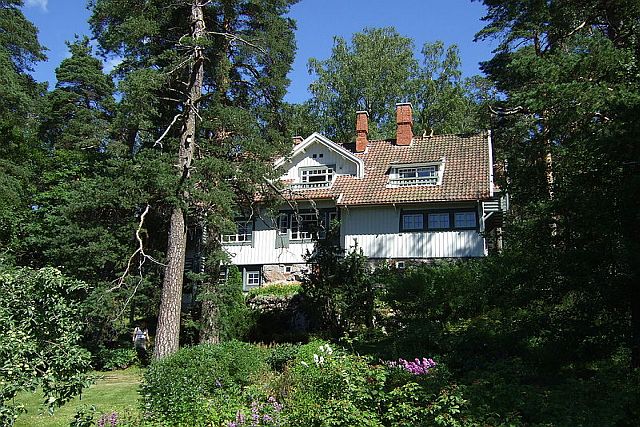 |
| The Sibelius Monument in Helsinki looks like an irregular series of organ pipes (wikipedia) |
1 – Iittala & Nuutajärvi (Finnish Glass) – Visitors to Finland are often surprised at the superb ceramics and design that is a national characteristic of the country. Nowhere is contemporary creativity better displayed in
 |
| Glass blowing demonstrations are popular (wikipedia) |
Today, one of Nuutajärvi’s most popular collections is Birds by Toikka established in 1962 by
Oiva Toikka who remains one of the greatest names in the history of Finnish
glass.
Nearby, another glassworks founded in 1881, Iittala has expanded into other areas of design such as
ceramics and metal which today includes tableware and cookware. Over the
decades, thanks to an all-star group of designers, Iittala has built an
international reputation for elegance and timeless design.
 |
| Commemorative Alvar Aalto stamp (wikipedia) |
For travelers, not only are the glass products unique souvenirs,
but the glass blowing process itself is worth the visit. Here master craftsman
breathe crystalline beauty from red-hot molten glass into incomparable
glassware.
From the Aalto Vase to the
exquisite architecture of Finlandia Hall, the white marble congress center in Helsinki
Such diversity makes Finnish design and craftsmanship “crystal clear.”
 |
| Stunning white marble facade of Finlandia Hall, designed entirely by Alvar Aalto (wikipedia) |
2 – Hvittrask – Speaking of
building design, Hvittrask may just represent the greatest collection of
architectural brilliance in history.
Located just 19 miles west of Helsinki
 |
| Architect's home and studio at Hvittrask just outside of Helsinki (wikipedia) |
Hvittrask translates in English to mean “White Lake
 |
| Eliel Saarinen lived at Hvittrask (wikipedia) |
The site was also the boyhood home of Eero Saarinen, the son of Eliel and
Louise. Eero primarily made his
reputation in the United States
designing monuments such as the Gateway Arch in St. Louis
During its heyday, Hvittrask was regularly visited by artist Axel
Gallen-Kallela, writer/dramatist Maksim Gorki and composer Jean Sibelius.
3 – Ainola – Travelers to
Finland immediately recognize the Finnish passion for the outdoors and Mother
Nature. Ainola, which means “Aino’s place” in honor of Jean Sibelius’ wife, is
the ideal synonym for that zeal.
Situated on the shores of Lake
Tuusulaniärvi
 |
| Jean Sibelius' home overlooking a lake at Ainola in Finland (wikipedia) |
 |
| Sibelius portrait (wikipedia) |
So intense was Sibelius for quiet that water pipes were not installed in
the house while he was alive because he could not deal with any distractions
during construction.
Though isolated, the passion for nature attracted other Finnish artists to the
area providing an active social circle for Sibelius and his family when he was
not concentrating on his work.
Sibelius died in 1957 and is buried in a garden at Ainola. Today the home
is open for visitors from May to September.
So you see, traveling to Scandinavia can
be a rewarding exercise in all disciplines of creativity, and here are three
examples of day trips to enjoy from start to Finnish.
 |
| Ainola is now a seasonal museum open to the public from May to September (wikipedia) |
Article first published in Communities Digital News
For more travel information, stories and tours visit Magellan Travel Club
No comments:
Post a Comment